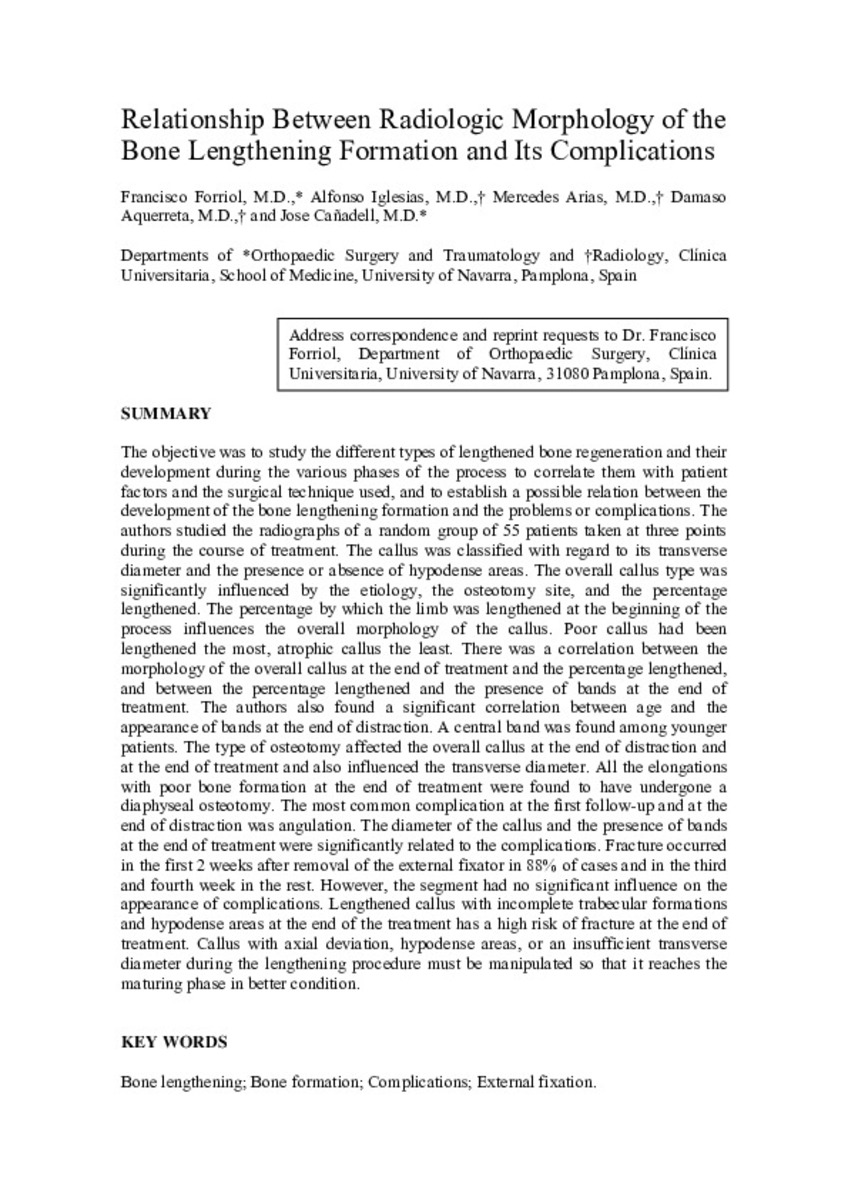Relationship between radiologic morphology of the bone lengthening formation and its complications
Keywords:
Femur/pathology/surgery
Follow-Up Studies
Humerus/pathology/surgery
Publisher:
Lippincott, Williams & Wilkins
Citation:
Forriol F, Iglesias A, Arias M, Aquerreta D, Cañadell JM. Relationship Between Radiologic Morphology of the Bone Lengthening Formation and Its Complications. J Pediatr Orthop B. 1999 Oct;8(4):292-8.
Statistics and impact
0 citas en

0 citas en

Items in Dadun are protected by copyright, with all rights reserved, unless otherwise indicated.







